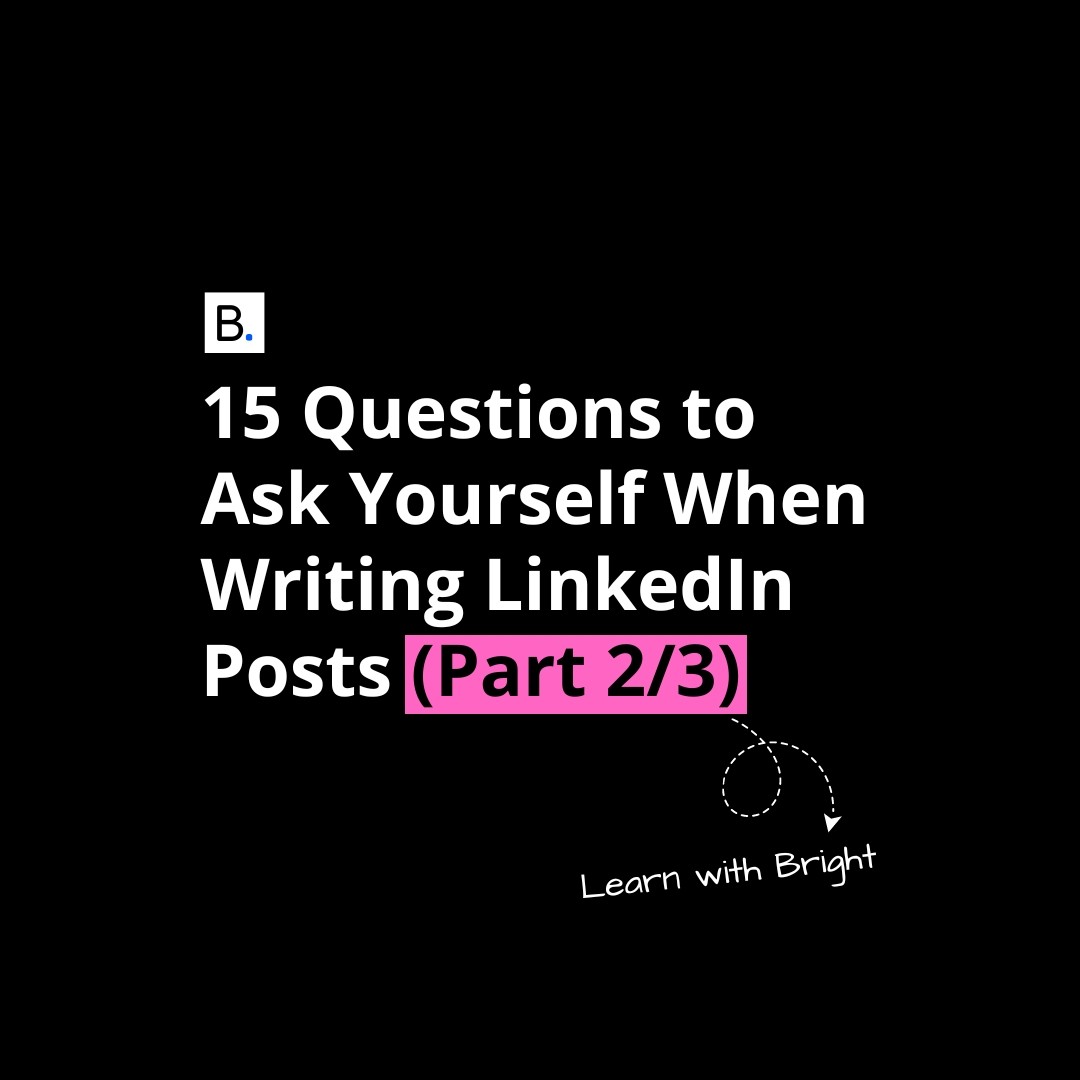Creative Process | 5 min read
Keep your LinkedIn posts fun, interesting and practical for your audience.
Without further ado, let’s dive right into another 5 questions you can ask yourself to make sure your LinkedIn posts are delivered well for your audience.
6. Does it use techniques that keep it interesting?
We all have that friend who - for some reason - we find very amusing whenever they speak.
Whether it’s their humor, choice of words, or ability to articulate a point, there are communication tricks they use in order to make the most of your undivided attention. 👂
Some of these, believe it or not, are also techniques you can use when writing posts, and they’re not as wild as you may be thinking.
For example:
• Examples (pun absolutely intended)
• Stories
• Imagery
• Analogies
• Metaphors
When writing, we want to make our posts both fun to read and effective in their nature.
By using colorful language and captivating writing techniques, we can paint a vivid picture our readers can visualize in their minds, giving our LinkedIn posts a more powerful impact. 🎨
7. Is it directly relevant for your target audience?
Although it’s intuitive to write LinkedIn posts that would interest your audience, there are scenarios in which you may be asking yourself if a particular post fits the criteria.
When this happens, it’s often because we’d like to write about something that’s related to our primary topic, but isn’t necessarily part of it. In other words, same overall world, but different niche. 🌏
A simplified example of this is if you typically post about social media marketing, and you decide to add a post about branding into the mix. It’s close enough to be in the world of marketing and in ways be related to social media marketing, but it’s too far to be within your niche of social media.
When thinking in terms of niches, we realize that this often leads to posts that could be very loosely relevant at best to the vast majority of our audience - a scenario to avoid.
When writing LinkedIn posts, we always want to make sure the majority of our readers can relate to the experience we’re writing about. 🤝
8. How can your readers best apply this?
A logical follow-up question. Assuming the post includes a relevant tip, teaches a lesson, or offers unique insight to the audience - what advice can you give them on how to apply the lesson?
Here are some parallel ways to think about this:
• When is the best time to use this advice?
• What are the common mistakes or pitfalls when attempting to use this?
• What are some tips, tricks and hacks to use this successfully?
• What are some things to make sure of when doing this?
• How can they make sure they’re doing it properly?
One of the keys to a good post is in its practicality - practical to learn due to the way it’s written, and practical to apply.
9. What are the benefits of applying this?
Think of the goals your audience is likely to have, based on why they follow you.
Hint: most of these goals may the same goals you have, or may have had in a different stage in your professional journey. 🚀
In what ways does your post help them achieve some of their goals, or help lead to growth?
This can be in terms of accomplishing tasks, resulting in a particular outcome, or just about anything else.
Some examples:
• Increasing their opening rates for their newsletters
• Decreasing the operational costs for their business
• Getting promoted at work
• Growing their LinkedIn following
When writing a post that teaches something, be sure to make the benefits and advantages clear (this is often the very thing in the post that grabs them).
10. What are the disadvantages of not applying this?
There are always 2 sides to the same coin. 🪙
Just as it’s important to know the positives of applying the content in the post, there are often negatives to neglecting it.
Why do they want to be sure they’re applying this? What missed opportunities could be lurking in the decision to avoid do this, or in simply not knowing to do this?
Another simple example: “you could be losing 20% of your leads because you’re not following up.” ➕
Coincidentally, wanting to avoid losing 20% of your leads will be the driving factor towards applying the advice in the post, which can lead to an increase of 20%. 📈
The point: there’s both a positive and a negative, and a message is typically better received when wrapped in encouraging language, rather than discouraging. 🎀
When thinking of a concept, it’s often easier to think of the disadvantages of not applying this advice. However, when crafting the post itself, it’s important to portray things in a positive light, by focusing on the advantages.
Be sure to focus on both when thinking behind the scenes, and to use positive language to drive your audience towards a desired result.
Quick Recap
It’s essential to place the readers at the center in both obvious and non-obvious ways when writing LinkedIn posts.
Let’s move onto part 3 to discover another 5 questions you can ask yourself when looking over a post, to help your content stand out on LinkedIn.
Happy creating.
- - - - -
We're on a mission to empower people to thrive in their careers using profession-oriented content. Try Bright today, and start making LinkedIn content with a proper studio.




